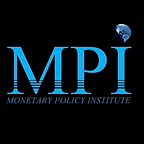The Impotence of Monetary Policy
The entire edifice upon which monetary policy is built is not grounded in empirical validation. This explains why central banks must go beyond a few increases in interest rates to tame inflation.
Louis-Philippe Rochon
Full Professor of Economics, Laurentian University, Canada
Editor-in-Chief, Review of Political Economy
Founding Editor, Review of Keynesian Economics
The New Consensus Model is not dead. It is still, as Lavoie (2022, p 10) says, “the bread and butter of central bank researchers”. It may have been dormant since the financial crisis, but as Hakes, Gamber and Shen (1998, p. 195) write: “Thus, although the Fed may respond modestly (or not at all) to its policy objectives for extended periods of time, this pattern of behaviour may be interrupted by periods when the Fed responds more aggressively to a single objective.” This reflects well the current state of monetary policy. After having been dormant for 2 decades or so, it has roared back to life in unprecedented ways.
This New Consensus model is both simple and elegant: it has a transmission mechanism component (consisting of an IS curve and a Phillips curve), and a policy component, consisting of the Taylor Rule. To be clear, changes in interest rates should operate through demand, unemployment, and inflation, in the hope of engineering a soft landing, with minimal cost to society. So both the IS and the Phillips curves are instrumental in this view — without them, we have reason to question the effectiveness of monetary policy.
But the model is badly flawed and not grounded in empirical support.
Regarding the first part of the transmission mechanism, “The more sensitive the response, the more potent is monetary policy” (Hall, 1977). In other words, it is crucial to have interest-sensitive components of aggregate demand. But Cynamon, Fazzari and Setterfield (2013, p. 13), write “The transmission mechanism from monetary policy to aggregate spending in new consensus models relies on the interest sensitivity of consumption. It is difficult, however, to find empirical evidence that households do indeed raise or lower consumption by a significant amount when interest rates change. Some authors have generalized the link to include business investments (see Fazzari, Ferri, and Greenberg, 2010 and the references provided therein) but a robust interest elasticity of investment has also been difficult to demonstrate empirically.”
Similarly, Sharpe and Suarez (2015, p. 1), researchers at the Federal Reserve, no less, write, “A large body of empirical research offers mixed evidence, at best, for substantial interest-rate effects on investment. [our research] find that most firms claim their investment plans to be quite insensitive to decreases in interest rates, and only somewhat more responsive to interest rate increases.”
Kopp, Leigh, Mursula and Tambunlertchai (IMF, 2019, p. 4) reach the same conclusion. According to the authors, there “appears to be little unexplained component of business investment beyond the expected demand effect. Other factors, such as reductions in the cost of capital, thus appear to have played a relatively minor role.”
As far back as the 1970s, Robert Hall (1977) stated the “the evidence is disappointingly weak.”
Strike 1.
As for the Phillips curve, Bullard (2019) claims that “U.S. monetary policymakers and financial market participants have long relied on the Phillips curve — the correlation between labor market outcomes and inflation — to guide monetary policy” — a sentiment echoed by the NBER (2019), “the relationship between inflation and the unemployment rate is a key input to the design of monetary policy.”
OK then, well, how about Claudio Borio, who has recently argued that “the response of inflation to a measure of labour market slack has tended to decline and become statistically indistinguishable from zero. In other words, inflation no longer appears to be sufficiently responsive to tightness in labour markets” (Borio, 2017, p. 2).
In a paper I published in ROKE, Solow (2018, p.423) says clearly that “the slope of the Phillips curve itself has been getting flatter, ever since the1980s, and is now quite small. … there is no well-defined natural rate of unemployment, either statistically or conceptually.” And Gordon (2018, p. 427) claims that “The slope of the short-run inflation– unemployment relationship has flattened.” Even Janet Yellen, in 2019, joined the fray, arguing that “The slope of the Phillips curve — a measure of the responsiveness of inflation to a decline in labor market slack — has diminished very significantly since the 1960s. In other words, the Phillips curve appears to have become quite flat.”
How about Mary C. Daly, President of the Federal Reserve Board of San Francisco (see Daly, 2019), who argues that “As for the Phillips curve… most arguments today center around whether it’s dead or just gravely ill. Either way, the relationship between unemployment and inflation has become very difficult to spot.”
Strike two.
In other words, the entire edifice upon which monetary policy is build is not grounded in empirical validation. This explains why central banks must go beyond a few increases in interest rates to tame inflation. They must increase rates several times until the cumulative effect collapses the economy. So much for a soft landing: it’s a myth.
This is where post-Keynesians come in with our better understanding of economic dynamics and price setting, and should I say it, our better understanding of central banking and monetary policy. Instead, monetary policy is left in the hands of technocrats with little understanding of the real world, slave to the whims of financial markets. As Epstein (2015) write, in my Encyclopedia of Central Banking, “Where central banks are ‘independent’ of the executive branch of government, they tend to be dependent on the financial sector for political support, and therefore tend to make policy with ‘finance coloured’ glasses.”
In the end, “Central bank independence can be harmful if it is based on a flawed policy doctrine or a structurally flawed institution” (Bordo, 2010, p. 33).
This too explains the current state of monetary policy.
